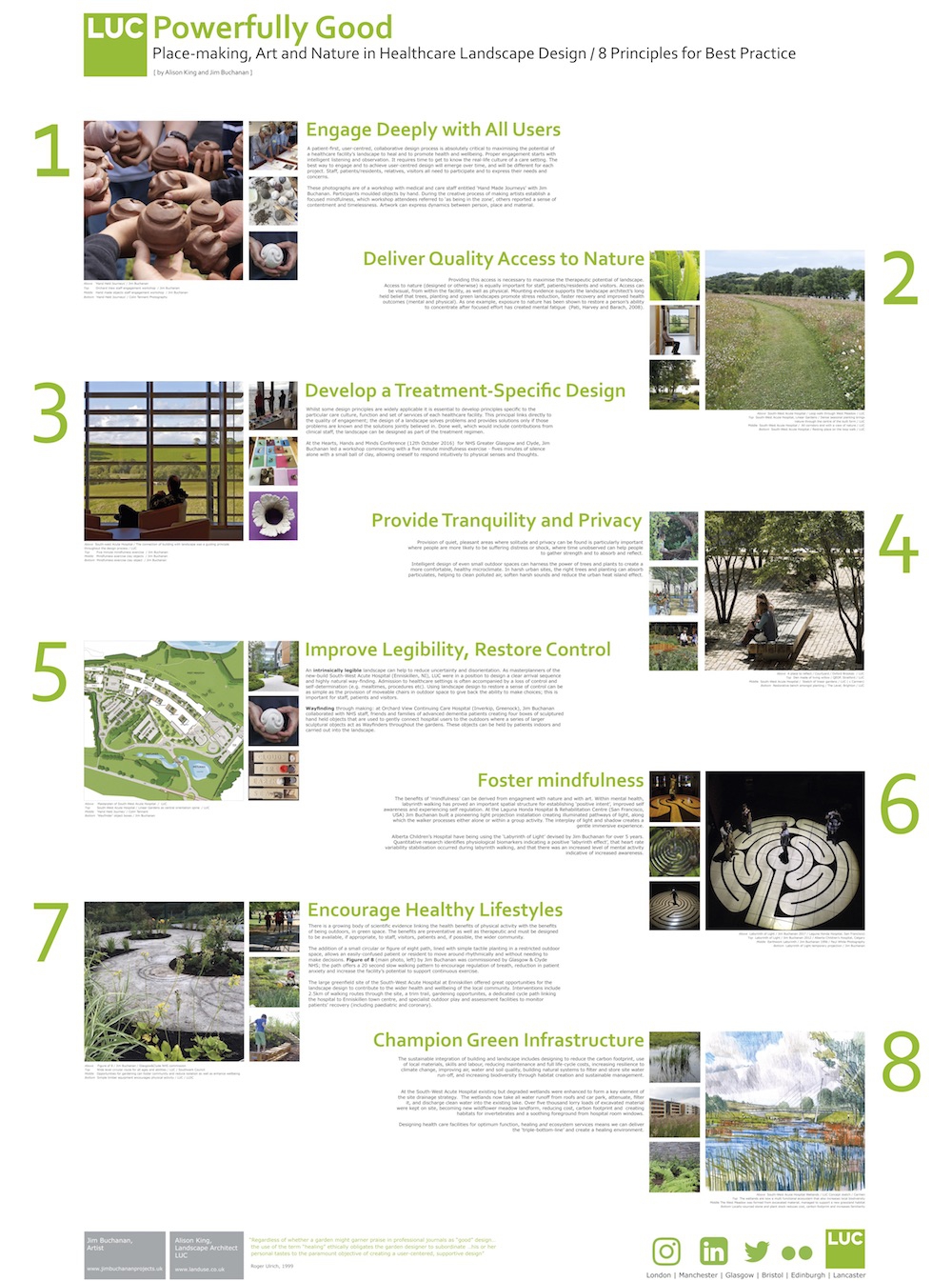Healthcare / Access to nature
European Healthcare Design 2018
Powerfully good: art, nature and placemaking in healthcare landscape design
By Alison King, Jim Buchanan and Jennette Emery-Wallis | 08 Jun 2018 | 0
This joint poster presentation between a landscape architect and an artist presents both practice and theory in designing places in which people of all ages can connect to nature, relax and re-focus.
Abstract
Powerfully good: art, nature and placemaking in healthcare landscape design
This joint poster presentation between a landscape architect and an artist presents both practice and theory in designing places in which people of all ages can connect to nature, relax and re-focus. It emphasises designing interventions and landscapes in healthcare environments across the whole lifecycle. Building on the work of Ulrich, Cooper Marcus and Sachs (2008), we present a series of case studies across a range of healthcare environments, including dementia care, general hospitals, children’s hospitals, and elderly care homes.
Using examples, the poster explores the design process and principles for delivering a landscape that provides the much needed respite, privacy, control, movement and reverie to promote healing. It’s critical to engage with staff and patients in the design process. Healthcare facilities often have little space or budget for outdoor space, but even small courtyards can offer the opportunity to create a healthy microclimate; the urban heat island effect, and air and sound pollution can all be reduced and their impacts lessened through intelligent landscape design. There is no excuse for a badly performing outdoor space; we can work with nature to harness its power to heal. Successful landscape design can help reduce staff stress and increase performance, hasten patient rehabilitation, and reduce the need for pain medication, thus reducing costs while improving health and wellbeing.
The project examples sit in the liminal zone where art and placemaking overlap, exploring the relationship between the cyclical repetitions found in nature’s rhythms and linear human activity. This is particularly evident in the walk-through installations utilising light projection, based on the hypothesis that there is a correlation between the way we move and the way we feel.
Collaboration with clinical departments at the Alberta Children’s Hospital (Calgary) since 2012 has led to qualitative and quantitative research, identifying physiological biomarkers indicating a positive ‘labyrinth effect’. Measurements of heart rate variability and saliva enzymes during a short walkable labyrinthine pattern show calming of the autonomous nervous system, and an increase in mental alertness.
A triptych labyrinth installation for the largest San Francisco public hospital, Laguna Honda, is offered by clinicians as part of physiotherapy movement, mindfulness practice, family and community outreach, and staff training.
At Orchard View Mental Health Care Facility in Gourock, a ‘figure of eight’ path surrounded by scented and tactile planting was installed. This simple addition offers highly anxious patients the opportunity to move continuously, promoting regular breathing and discharge negative tension.
We’ll explore new possibilities for healing art and landscapes, and hope to stimulate discussion with this presentation.
Organisations involved

